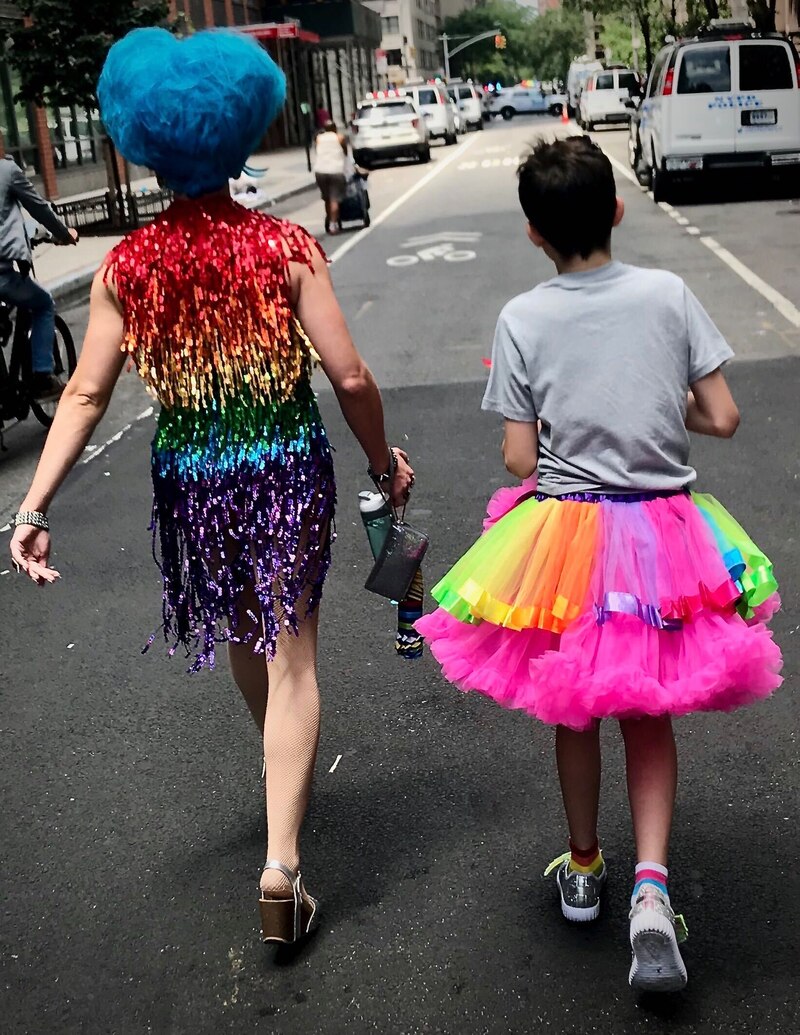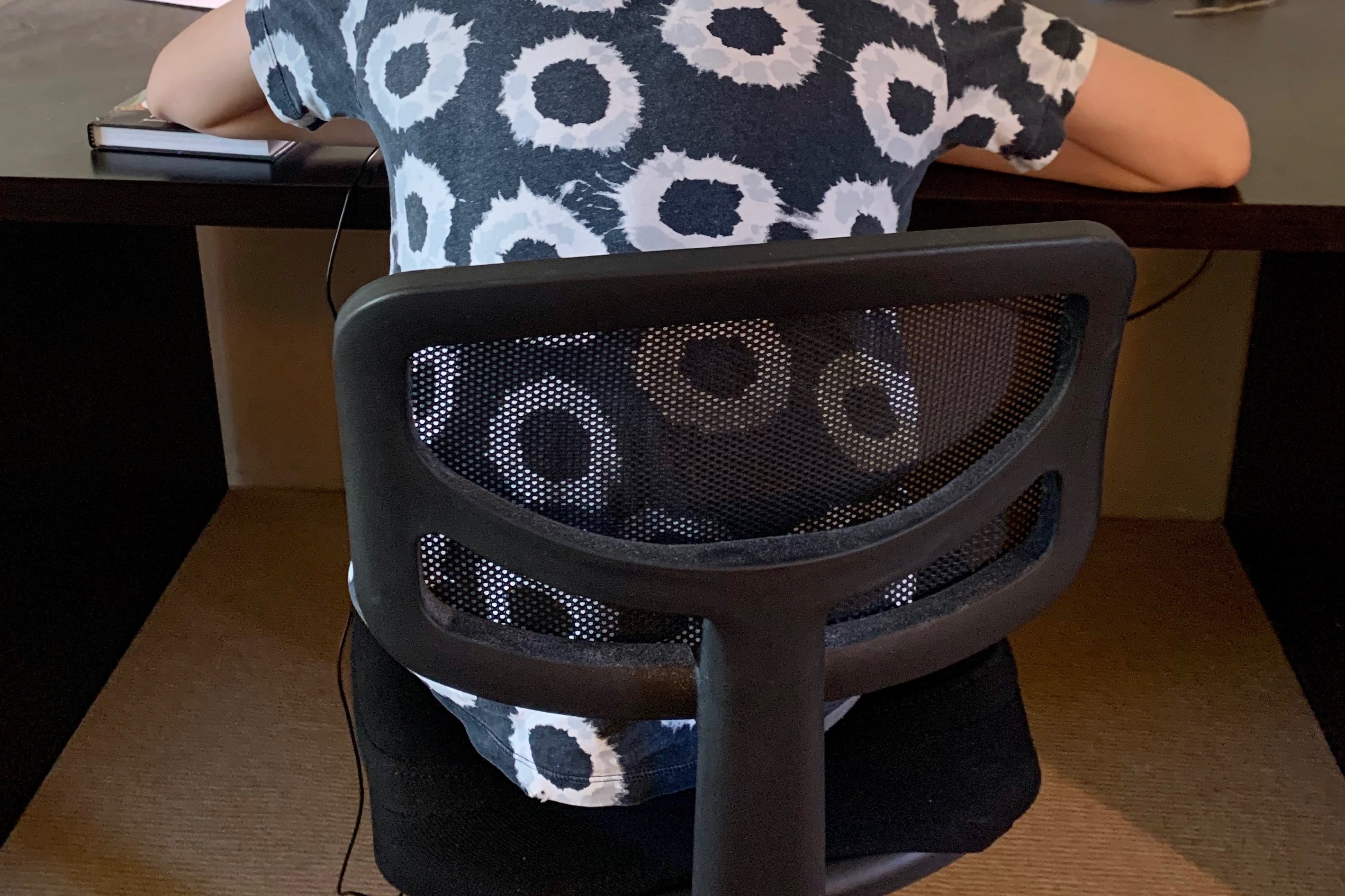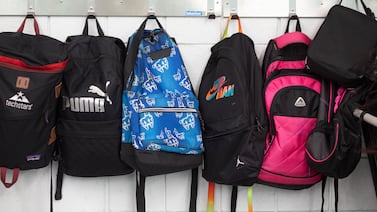Months after coming out as a lesbian to her peers at her South Bronx high school, Tanya attended her first Youth Pride Parade last June in Central Park. A few days later, while watching the news, Tanya heard her grandmother say that parade goers were “going to hell.”
The sophomore, who is not out to her family, said she was raised in a conservative Jamaican and West African immigrant household, where she was taught to believe it was wrong to be anything but heterosexual. She found a “very welcoming” environment at her high school, meeting openly gay, lesbian and bisexual students. Within two months of attending the school, she came out. (Student names have been changed throughout this story to protect their privacy.)
Now, as the Bronx teen is stuck at home, where she shares a room with her father, she’s trying to hide her sexual orientation. Tanya does not have headphones, so she reminds classmates and others during virtual counseling or advisory sessions not to say anything that would tip off her father, who is home during the day.
“I’m mostly trying not to out myself,” she said.
While some LGBTQ students might be bullied at school, others have found acceptance from friends and educators at school and in afterschool programs. As the pandemic has forced the closure of school buildings, many students have lost their only safe space, and are potentially around families who don’t know or support their sexual orientations or gender identities.
LGBTQ advocates fear that isolation can lead to worsened mental health, depression, and even thoughts of suicide for a group that is already at high risk for these factors. Lesbian, gay, bisexual, and transgender teens and young adults are twice as likely to have thoughts about suicide, compared to their peers who identify as heterosexual, often linked to discrimination they may face.
Even students who have supportive homes are missing an important part of their development: affirming their identities by spending time with their peers and creating new relationships, advocates worry.
“We know that, for the youth we work with, their peers are their biggest influencers,” said Olin Winn-Ritzenberg, education services coordinator for The Lesbian, Gay, Bisexual & Transgender Community Center, which provides support for youth ages 13-23. “School is also their social setting. It’s also where they are learning how to be who they are and getting feedback from their peers. And now that may be cut off from them.”
His staff has been arranging virtual programming and calling students since schools closed, though he said it’s been tough to track down some who don’t have access to internet or technology or may be dealing with other crises related to the pandemic.
Before the coronavirus shut down New York City, Tanya would typically be out of the house from morning until 8 p.m., attending school and participating in several clubs and sports. Now she’s spending all day at home in an environment that, for a while, felt hostile.
She and her father had shared an apartment with a roommate, who called her gay slurs, based on what Tanya believes is her preference to dress traditionally masculine. Sometimes, the roommate blasted a 1992 Reggae song that gained notoriety for its anti-gay lyrics, Tanya said. Shortly after they caught the woman spitting in their groceries, Tanya and her father moved to another apartment upstairs, she said.
Though she’s still able to reach counselors and teachers, it’s not the same as having access to them in person without the risk of someone else listening in, she said.
“I was free to say what I wanted to say,” Tanya said. “I really just, like, vent to my guidance counselors and things like that. They’re always talking to me, and they help motivate me and tell me there’s nothing wrong with me.”
The Trevor Project, a group that provides crisis and suicide prevention for LGBTQ youth under 25, says teachers should be offering virtual ways for students to connect with them and their classmates. That kind of support can be “protective against anxiety and depression, including among those who lack support from their family.”
Eric Vaughan, manager of LGBTQ programs at the Department of Education, said his office has been trying to “preserve a safe space” for LGBTQ students by setting up virtual programming, such as tours of the Stonewall Inn, or events, such as virtual discussions with authors of LGBTQ-focused books that his office sent to schools before the pandemic shuttered buildings. Right now, his office is planning virtual activities for Pride Month in June, Vaughan said.
“I’m a gay man who was, like, very closeted in high school, so it’s super close to home, and I think about students who are now living with their parents 24/7. I didn’t have the most affirming household,” Vaughan said. “When I’m thinking about resources and talking to advisors, and what would have helped me out in those times, I try to keep that in mind throughout this process.”
Some schools are hosting virtual Genders and Sexualities Alliances, which are student-run groups that exist at many schools. These are vital for students who need a “space where they feel affirmed, where they’re able to try out a name or pronoun to see if that fits,” and now may even be beneficial for students who felt uncomfortable participating in person, said Jared Fox, the former associate director of LGBTQ Equity with the city’s education department.
But there are obvious complications, such as the fear that someone else in your house can hear you — that is, if you have access to reliable internet or a computer.
“I know someone who shares a room with six people and has to use the chat feature,” Winn-Ritzenberg said, explaining that the student doesn’t feel safe to be overheard.
To address this, Vaughan’s office emails counselors and teachers with links to organizations or mental health resources that they can pass on to students who may need it and share that information on Facebook and Twitter. They’ve also encouraged GSA advisors to record meetings – which are held on a “what’s said here, stays here” basis — so members can watch when it makes sense for them. But even the idea of recording could make some students uncomfortable.
Jason, a junior at Tanya’s high school, is bisexual, but his mother doesn’t know that. He feels he can mostly be himself around her, but there are certain other things he must suppress, he said. For example, to pass time he’s recently been experimenting with make-up, but he hides the supplies because his mother would disapprove.
He finds some support by staying in touch with friends, including Tanya, but still misses being his full self around friends in school.
“It’s not just makeup, I need to get my ‘creativeness,’ in a way,” he said. “Instead, I have to stay home, so my energy, it’s not going outward to anybody.”
And while he’s comfortable with who he is, he’s worried about peers who aren’t and knows someone who was kicked out of their home because of their sexual orientation.
Roughly 44% of New York City’s homeless youth population identify as LGBTQ, according to Safe Horizon. The city recently halted plans for a new program that would have paired homeless LGBTQ youth with jobs, as the city looks to cut costs amid a budget crisis fueled by the pandemic, the Queens Eagle reported.
For Jason Cianciotto’s 13-year-old son, school was the one place he wasn’t accepted, until that dramatically changed when he switched schools.
Bobby lived in seven foster homes over the four years before Cianciotto and his husband adopted him. Their acceptance helped Bobby come out to a couple students, in confidence, at his then-middle school. But word spread, and students began bullying Bobby regularly about his sexual orientation and because he has gay parents, he said.

After nearly two years there, Bobby’s fathers moved him to another Queens middle school last May, which Bobby said he has grown to really like. Most students accept him, teachers have rushed to his defense a couple times, and he has noticed the little things, such as LGBTQ supportive flyers on the wall or the lack of reaction when he reveals he’s gay. He made a lot of friends and regularly attended the school’s GSA, which has more than 20 student members.
“I miss being with my friends in GSA,” Bobby said. “There are a lot of nice people there. A lot of the teachers are supportive.”
Though the group meets virtually, Bobby’s online schedule for extra services often conflicts, he explained.
Cianciotto and his husband have long wanted for Bobby to make new friends “and heal” from everything he’s been through. They’re sad he’s been cut off right when he began to feel more comfortable with his peers.
“School can be a place that is a refuge, a place where you can independently explore, where you can see outside of the confines of your home,” said Cianciotto, who co-wrote a book about LGBTQ youth in schools. “There is a whole world out there where there are people who will accept them.”.
Cianciotto himself struggled to come out as a young student years ago, and he understands the importance of having a supportive school environment for children who may grapple with depression, or even worse, suicidal thoughts. He is worried for the LGBTQ youth who don’t feel safe to be themselves around their families.
“I fear for their lives,” Cianciotto said.








